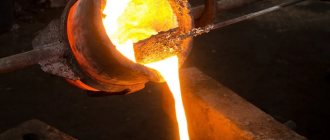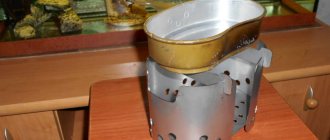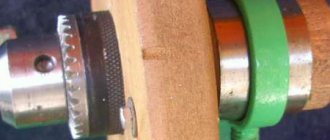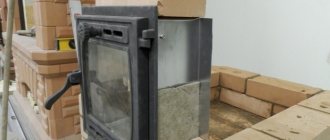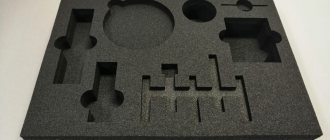Aluminum is a metal that is widely used in industry and everyday life.
It is used to produce not only aircraft and ship parts, but also dishes and other utensils. Therefore, there is often a need to independently manufacture aluminum parts that have failed.
The ability of aluminum to melt at relatively low temperatures makes it possible to produce cast products from it in artisanal conditions. In order to independently produce cast aluminum products, you need to know the behavior of this metal at high temperatures and its physical and chemical properties.
Characteristics of aluminum
The melting point of aluminum depends on the purity of the metal and is approximately 660 °C. Its boiling point is 2500 °C.
Aluminum is distinguished by its lightness and ductility, so it bends well and can be processed by stamping.
This metal is an excellent conductor of heat and actively enters into a chemical reaction at high temperatures with atmospheric oxygen, forming an oxide film on the surface. It protects aluminum from further oxidation, but when scrap melts, it significantly affects the composition of the alloy. During the metal smelting process, the structure of aluminum changes.
When it cools sharply, internal stresses and shrinkage of the resulting alloy may occur. This must be taken into account when working with aluminum at home.
Technologies for home aluminum casting and necessary equipment
The principle of casting aluminum at home should be based on the technology for its production in production, adjusted for conditions that can be used at home.
Aluminum products are produced by casting in several ways. In domestic conditions, the most common and convenient method is the technology of casting molten aluminum into specially made molds.
Therefore, to carry out the process, two things must be ensured:
- build a furnace for melting aluminum scrap;
- create the desired shape to produce a cast alloy or a separate part.
The casting process must include several stages:
- Preparation of aluminum scrap, including cleaning from dirt, impurities and various fillers, as well as grinding it to a small size.
- Carrying out the smelting process in the planned way. When the metal is completely melted, slag formations must be removed from its surface.
- Filling the prepared mold with liquid aluminum melt. After solidification, the ingot is freed from the molding mass.
Let's consider how to melt aluminum at home, what designs of furnaces for melting metal can be used, as well as options for making molds yourself.
Homemade furnaces and methods for melting aluminum
In order to melt aluminum, you need to heat it to a temperature close to 660 °C. It is impossible to reach such a temperature on an open flame of a fire. Therefore, a closed space is needed, which a homemade stove can provide. It can be heated by burning coal and wood or using natural gas.
You can also use an electric muffle furnace if you have one on the farm.
With a self-made stove, forced ventilation must be provided to maintain the combustion process.
1. The simplest version of a homemade fireplace can be made from old pots.
Its design is as follows:
- As a frame, use a steel container, for example, an old pan, on the side of which you need to make a hole to supply air through a connected metal pipe.
- Air can be forced through the hose using a vacuum cleaner.
- Coal is placed inside the device.
- Then the coal is set on fire and air is supplied to keep the fire from going out.
- A container for melting aluminum is first placed inside an improvised furnace structure and lined with coal on its sides. When it burns, uniform heat distribution is ensured.
- To prevent heat from being lost to the surrounding air, the top of the “pan” stove should be loosely covered with a lid, leaving a small gap for the smoke to escape.
An ideal design would be a firebox with an oval arch made from a masonry mixture used for heat-resistant bricks. You can use a flower pot of the desired size as a frame to create an oval vault.
After the mixture dries, a good firebox is obtained that can withstand several heats.
Video:
2. The second version of the furnace involves using the flame of a household gas burner to heat aluminum.
It can only be used for piece products made of aluminum weighing no more than 150 grams. An imitation oven is created by using two containers inserted into each other with a small gap. These can be ordinary cans from canned food.
The outer jar should be larger. A hole with a diameter of about 4 cm is made in it to ensure the supply of flame to the inner can.
The flame jet should be directed towards the opening of the can. Only the inner container is heated directly, and the outer one serves as a shell that retains heat. The top of the structure must be covered with a simulated lid, leaving a gap for the removal of combustion products.
This design is disposable and can only be used for one melt, since the tin is thin and can quickly burn out.
Video:
Basic types of reverberatory furnaces
The basic types of gas reverberatory furnaces for melting aluminum are [1]:
- Dry hearth reverberatory furnaces, in which the metal is heated on an inlet inclined hearth before being melted (Figure 1).
- Wet bath reverberatory furnaces , in which metal is loaded directly into the aluminum melt, usually without preheating (Figure 2).
- Shaft smelting furnaces (stack (shaft) furnaces) are characterized by increased energy efficiency, as they use the heat of exhaust gases to heat the loaded aluminum charge (Figure 3). Shaft furnaces are a modified version of reverberatory furnaces
Figure 1 – Gas reverberatory melting furnace with dry hearth [2]
Figure 2 – Bath-type gas reverberatory melting furnace [3]
Figure 3 – Gas shaft melting furnace [4]
Another type of gas furnace is crucible furnace, which is used for small casting volumes, as well as for special alloys. These furnaces require separate consideration.
Characteristic
The melting point of materials is determined by their purity. Due to its lightness and good ductility, aluminum is suitable for various technological procedures. Under the influence of high temperatures, a reaction with oxygen occurs.
An oxide film appears on the surface of the metal, protecting it from oxidation and corrosion. During melting, aluminum changes its structure, so it needs a protective coating. With sudden cooling, additional internal stress and shrinkage appear.
Additional functions of gas furnaces
Each of these three basic oven types may have additional options, as well as elements common to other oven types, such as:
- all three types of furnaces can have external wells for loading crushed charge, for example, shavings, into the melt;
- inclined hearth furnaces and shaft furnaces may have additional loading windows for loading the charge directly into the melt;
- bath furnaces and shaft furnaces can have a wide threshold or a short inclined hearth at the entrance to the furnace for preheating ingots and massive, for example, packaged scrap, as well as for the convenience of removing slag from the surface of the melt;
- All types of furnaces can have a melt mixing system, both in the loading well and in the aluminum melt bath.
Dry hearth reverberatory melting furnaces
In dry hearth furnaces, the loaded aluminum charge is placed on an inclined hearth, which is located above the level of the molten metal (Figure 4). Hot exhaust gases pass through the charge and quickly heat it up. The charge melts and gradually flows from the inclined hearth into a chamber for accumulating molten metal, which is therefore often called a storage tank.
Figure 4 – Reflective melting furnace with a dry hearth. Heated ingots are visible at the entrance to the furnace [5]
Dry hearth ovens are usually used when:
- Most of the loaded aluminum charge is melting ingots, including large ones, that is, the sheet elements have a minimal surface.
- The aluminum charge contains, for example, steel elements, as well as residues from casting molds, such as sand castings. The aluminum part of the charge is melted on an inclined hearth and the aluminum flows down the inclined hearth, and foreign materials remain on the hearth and are removed from the furnace using scrapers.
- The aluminum charge may contain water or be wet.
Advantages of dry hearth furnaces:
- Safety. The entire charge is melted on an inclined hearth, and not under the surface of the melt. Such heating prevents water from entering the melt and the threat of explosion.
- Preventing melt contamination. Allows you to remove foreign, non-aluminum materials from the charge that remain on the inclined hearth.
- Ability to produce large volumes of liquid aluminum almost continuously.
Disadvantages of dry hearth furnaces:
- Typically these stoves have two chimneys, one above the inclined hearth and the other above the boiler. This requires a burner control system for optimal operation [1].
- High loss of aluminum (7-12%) when melting in a furnace atmosphere at a temperature of 700-760 degrees Celsius. Waste is the loss of aluminum metal contained in the loaded charge as a result of its oxidation and transformation into slag.
- Low energy efficiency. The efficiency of furnaces of this type increases with increasing ratio of the volume of the loaded charge to its outer surface. Maximum efficiency is achieved when melting large aluminum ingots, sometimes weighing up to 500 kg [1].
Stage one
We divide the broken pump into two sections using plasticine. To do this, we will need plasticine partitions; they are used to separate the pipes into two parts. We remove excess plasticine at the junction of the part with a knife.
The form we will be making consists of three sections. Before filling the first section with the mixture, lubricate it with a separator. The separator can be made from sunflower oil and stearin. Now let's move on to the constructor. We will fill all the empty spaces in the construction set with plasticine.
We will attach the plasticine partitions on the pump to the sides of the construction set. It is necessary that the structure is sealed, otherwise the mixture may leak outside the constructor. In this case, you will have to start all over again.
Let's prepare the mixture itself. Mix gypsum and sand in a container in a 1:1 ratio. You can use river sand or quartz sand, both options are suitable. We took the plaster grade G-16, this is ordinary artistic plaster for sculptures. Add water until you get a fairly thick flowing mixture, reminiscent of low-fat sour cream. Fill the first section of the structure with the mixture, tap on the sides of the structure to distribute the mixture evenly, and wait for it to harden.
Before you start pouring the second section, you need to remove the plasticine partition. Now we will separate the pump pipes with partitions. Don’t forget to lubricate the part and partitions with separator.
Let's fill the next second section with the mixture, and also knock on the walls of the constructor for even distribution. Let's analyze the formwork from the designer. We will make a couple of holes in the resulting product using a 10 mm drill. These are a kind of locks that prevent section number three from moving relative to the first and second.
Let's connect the two resulting forms and insert the blank. Let's restore the formwork from the designer. In this regard, the designer is an irreplaceable thing; you can create any shape from it. Grease the mold with a separator. Let's add one row of the constructor on top. This will be the blank for the third section.
We are all done with filling the mold. Now you need to very carefully disassemble the structure.
Let's reassemble the first and second sections and mark the location for casting. To do this, you need to drill a hole with a diameter of 15 millimeters. It would be enough.
Now you need to assemble all three forms together and fasten them with wire.
Bath type reverberatory melting furnaces
In these furnaces, the combustion products are in direct contact with the surface of the melt and heat transfer occurs through a combination of convection and radiation. These furnaces have a lower roof to maximize the use of radiant heat, the most efficient way to transfer heat into the aluminum. The heat source (burners) can be located at a distance of 45-60 mm from the aluminum melt mirror. The closer the heat source is to the surface of the melt, the faster the heat is transferred to it [1].
Figure 5 – Bath-type reverberatory melting furnace [6]
Bath-type reverberatory melting furnaces are used when:
- The aluminum charge consists mainly of one alloy or related alloys, and changes in alloys occur rarely.
- The charge can have a large surface, and its components can have different sizes, including small thicknesses, for example, scrap aluminum profiles, as well as packaged aluminum scrap.
- Large volumes of molten aluminum are required.
Advantages of bath-type reverberatory furnaces:
- The installation cost of such furnaces is the lowest compared to dry hearth and shaft furnaces.
- All metal melts under the surface of the aluminum melt, which ensures a relatively low loss of aluminum metal of 2-5%.
- Allows various additions depending on the conditions of specific foundries: a small under or threshold for preheating ingots or packaged scrap, a loading well for crushed scrap (Figure 5), mixing the melt, a window for easy degassing, etc.
Disadvantages of bathtub type stoves:
- They have an increased ratio of the furnace capacity for molten metal to the melting speed of the furnace, which requires additional production space. A typical ratio is 8 to 1.
- If melting ingots are used, they require preheating on the threshold or hearth before being loaded into the melt.
- A lower oven roof requires extra attention when cleaning it.
Precautionary measures
To work with molten aluminum, you must use personal protective equipment. All exposed areas of the body, hands, and face must be protected.
REFERENCE! It is best to use welding gloves; they can withstand temperatures of more than 600 0C. This means of protection is the most basic, since the possibility of molten metal getting on your hands is very high.
It is also better to use goggles and a mask to avoid hot elements coming into contact with your face and eyes. To protect the entire body, you can find a metallurgist suit that has high fire resistance. When cleaning aluminum welding flux, a chemical respirator is used.
Shaft melting furnaces
Shaft smelting furnaces have higher energy efficiency due to better sealing of the furnace from the penetration of atmospheric air and the use of exhaust gases to preheat the aluminum charge.
The aluminum charge passes down the charging shaft and gradually reaches the melting zone, where it is melted by the burners and flows down into the storage tank. Hot exhaust gases pass from the melting zone through the shaft and heat the loaded charge.
Figure 6 – Shaft melting furnace [7]
Advantages of shaft furnaces
- Thanks to preheating of the charge with combustion waste products, energy efficiency reaches 40-50%.
- The finished aluminum melt has a reduced content of hydrogen and non-metallic inclusions. This is achieved by separating the melting zone and the preheating zone. Moisture and other pollutants evaporate or burn while still in the mine, and a dry charge with a minimum of polluting materials enters the melting zone.
- The absence of excessive contact of the melt with atmospheric oxygen, which ensures a reduced level of waste of metallic aluminum (0.8-1.5%).
Disadvantages of shaft furnaces
- In order for shaft furnaces to achieve low levels of waste and high energy efficiency, they must be operated strictly in accordance with the rules established for them, including the use of a sufficiently dense aluminum charge. With a lightweight and thin-walled charge, shaft furnaces may have increased aluminum waste and reduced energy efficiency.
- Shaft furnaces generally have a fairly large height (about 6 m), which is not suitable for all industrial premises.
- The refractory lining at the bottom of the charging well of a shaft furnace is subject to increased mechanical shock loads, which leads to the need for more frequent maintenance.
- Shaft furnaces are more complex to operate than reverberatory furnaces and therefore require additional qualified personnel.
DIY forge for melting aluminum
Aluminum is used in the production of parts in blacksmithing. The peculiarity of such an alloy is that it has low weight, a high degree of ductility, and good conductivity of heat and electricity.
With all these qualities, the alloy in question can be called a low-melting material, which significantly increases its popularity. To carry out work on creating parts from aluminum by bringing the alloy to a plastic state, a forge is used.
For many years, people have considered the question of how to make a forge for melting aluminum and the result of a huge number of attempts has become structures that you can create with your own hands.
Homemade forge for melting aluminum
Purpose and classification
A metal smelting forge is a furnace that has been used in blacksmithing for many years. However, the small efficiency indicator determined that it was not used in the production of products from the alloy in question in industry. There is the following classification:
- By type of housing: open and closed. Open has a completely open top. The closed version has a closed top.
- At the installation location: stationary and personal forging.
Closed type forge Open type forge
To remove gaseous combustion products, a special pipe is created if the work is carried out indoors. The open type does not have a pipe, since combustion products escape without being drained.
General operating principle
With your own hands, using scrap materials, you can create an effective system that will allow you to carry out forging work. There are a huge number of types of designs that you create with your own hands. A professional forge has the following elements:
- the table is made of fire-resistant material;
- there is a firebox with a grate;
- air chamber to improve fuel combustion efficiency;
- air drainage with supply air duct;
- valve for regulating air supply;
- tent;
- window for feeding workpieces;
- umbrella;
- chimney;
- crucible;
- hardening bath;
- gas-air chamber.
An example of a furnace design for aluminum smelting
The type of forging equipment in question can be called a classic forge, which is used in blacksmithing. It is quite difficult to create it with your own hands, but you can create a simpler design for melting aluminum.
It is better to make it yourself using scrap materials. A mini forge made of 6 bricks is suitable for obtaining various parts that are used to decorate metal objects, buckets or other parts. The creation process can be divided into the following stages:
We create the body from fireclay bricks. Such a brick can withstand exposure to high temperatures for a long time
When choosing a brick, you should pay attention to the fact that it should not have damage or defects. This is because cracks will lead to heat loss. We create grate grate shelves from scraps of steel pipes
Steel pipes should be of small diameter. Fusible material options cannot be used. The grate is made from steel strips, the thickness of which is 4-6 millimeters. We twist the grate at an angle with a screw. The fuel can be coal or coke. Ignition is usually carried out using a blowtorch. You can also use a gas burner. A window under the nozzle must be created when using a blowtorch. This is because the forge emits a lot of heat, which can cause the lamp tank to explode.
This type of design, which you can quickly create with your own hands, should be used exclusively outdoors, since there is no umbrella with a chimney. During smelting, a large amount of combustion products is released.
When considering the question of how to make a forge for melting aluminum, we note the possibility of creating portable versions. An example is a portable version of the track, which with additional elements are installed on a common base. The lining is represented by fireclay marl with fireclay sand. Another design element can be called an air supply system to the track, for which you can use, for example, a manual siren. It can run on coke or charcoal.
, please select a piece of text and press Ctrl+Enter.


